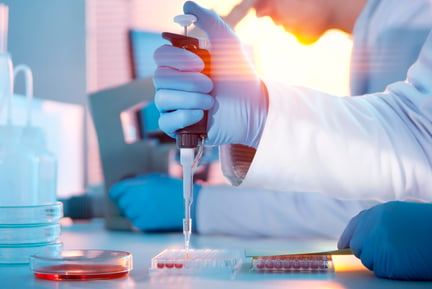Despite efforts to improve food safety, the number of product recalls around the world suggests that the battle isn’t over. Remco Pieters – our voices on food safety – explains why you can’t always judge a book by its cover.
More effective global standards and regulations, advances in technology and a stronger culture of brand protection among major producers have combined to encourage the industry to err on the side of caution when considering whether to recall foods that may be unfit for consumption.
Company reporting of even small recalls has become more common, increasing public visibility of the events and expanding the number of incidents on annual reconciliations conducted by watchdogs, regulators and certification bodies. Rather than see these events as evidence of growing industry problems, the increased visibility of recalls should instead be seen for what it is: an illustration of an industry that is on the right track towards keeping the global food supply safe.
Judging from the results of recent surveys, recalls continue to be triggered by some pretty consistent culprits. Analysis conducted by LRQA of recalls in Northern Europe over the past two years indicate that microbial contamination of the food chain is the predominant cause of recalls.
Just over 30% of the 164 events recorded throughout 2017 and 2018 were determined to have come from microbial causes; recalls from the potential introduction of allergens or mislabelling comprised the next largest category, at just over 21%.
That these triggers remain at the top of the list of causes for recalls will not come as a surprise to recognised certification bodies or food safety and standards organisations such as the ISO, the FSSC and the British Retail Consortium (BRC).
Food hygiene and the maintenance of supply chain controls against the introduction of foreign bodies or allergens require constant diligence from all industry stakeholders, simply because they are daily safety issues that most of the workforce touches.
And as much as the industry increasingly relies on new technology, people remain the solution. Production sites need to have the right people, with the experience and training to recognise potential hazards and put certified processes in place that are guided by best practice and easy to follow.
It takes just one missing link in the learning – or a momentary lack of attention – to set off a chain reaction, even for companies whose incoming food supply is protected by a robust sampling regime. It is simply not possible to test everything.
An example of how simple errors can have cascading consequences was recently found in a significant EU recall. Contamination was traced to the supplier of a basic pork product widely used in the production of deli meats such as salami and distributed by at least seven retail food chains, from which several products were recalled.
A preliminary investigation pointed to a 20°C drop in the temperature of the water used as a heating agent to kill microbes during processing; the lower temperature created the conditions for the development of bacteria, in this case Salmonella.
According to LRQA’s research in Northern Europe, the potential or active presence of Salmonella was the biggest cause of microbial recalls in the past two years. Just over 40% of recalls in that category found a potential presence of the bacterium. The presence of mould was second, having been found in about 22% of reported cases.
The introduction of potential allergens such as peanuts – or the lack of labelling denoting their presence – is another problematic area for an increasingly safety-conscious food industry.
In a recent BRC survey, major brand owners believed that their biggest reputational risks came from product fraud and the product recalls caused by the introduction of allergens and/or mislabelling issues.
For their part, the BRC and other organisations have strengthened the requirements for more robust production controls in the newest versions of their related standards. But anecdotal evidence – such as recent surveys – would suggest this area remains a significant challenge for food producers and manufacturers.
Certainly, the potential for the introduction of allergen-related hazards is an increased area of focus during visits to certifiable sites made by standards personnel, or those working on their behalf from authorised certification bodies such as LRQA.
Mislabelling can be caused by mixing up or selecting the wrong packing material. In some cases, the labelling itself simply incorrect, whether it was sourced by the manufacturer, or provided by the supplier.
In general, the risks of recalls rise when several products are made using the same production line and are compounded when employees lack the experience or training to effectively manage a product changeover.
While these are specific scenarios, experienced factory managers and food-safety auditors often see them as symptoms of broader problems. They may be a result of poor change management, poor product development or insufficient hazard analysis practices, or perhaps a combination of all.
This is why effective food-safety practitioners firmly believe that corporate best practice needs to be driven from the top, whether by programmes that ensure factory employees have the training and tools they need, or by instilling in the workforce a responsibility for their foods’ safety and for reporting potential problems.
It is no coincidence either that many food-safety standards begin with minimum requirements for management commitment; the safety and work cultures of a food production site should be built to support compliance with the expectations of global standards.
Food recalls may be more visible today than they were a decade ago. But that should not simply be seen as evidence of more problems in the food supply chain. There are more recalls because the industry has: better technology (such as the ability to trace products); an improved ability to detect health risks (whole genome sequencing on pathogens, for example); more regulatory oversight; and more food production in general.
Modern brand-conscious food producers are increasingly aware that any contamination problems they may encounter cannot be kept silent; nor should efforts be made to minimise the size of a recall when problems arise. Products have to be withdrawn from the market, fully, and as soon as possible.
Simply put, they know food stocks are rebuilt more quickly and cheaply than hard-won corporate reputations.
Find out more about our food safety assurance programmes, including FSSC 22000 v5, BRCGS Global Standards, HACCP, IFS and ISO 22000.




